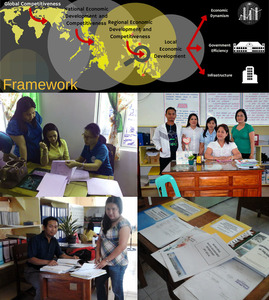
ASCOT instructors Sherwin Glorioso and Von Gerald Macose , Norma Barbasa , and Extension staff Jestoni Macasinag, were all requested through the extension office to validate the CMCI data of the province of aurora. Part of their tasks was to visit the different LGU, analyze then validate the data, under the supportive supervision of Extension Director Dr. Eduardo F. Macose
The Cities and Municipalities Competitiveness Index is an annual ranking of Philippine cities and municipalities developed by the National Competitiveness Council through the Regional Competitiveness Committees (RCCs) with the assistance of the United States Agency for International Development.
The process is done online with the help of Google technology (Google docs). Usually in charged in the initial answering of the form are the licensing officers of the different local government unit. A National Template was created and uploaded to provide the initial overview of their LGU data regarding the economical standing of a city/municipality. These will later be ranked based on data collected from the LGUs and submitted by the (RCCs).
The Existing competitiveness indicator systems were used as guidelines in forming the framework behind the Index. Three convergent pillars were found among the most common key indicator areas: Economic Dynamism, Government Efficiency and Infrastructure. The framework integrates these pillars of local economic development and competitiveness up to the regional, national, and global levels
The rank gives them an impression of the true measure of competitiveness that will attract businessmen and investors to locate in their cities.” It was designed to encourage local governments to regularly track data and ventually benchmark performance against the most competitive cities every year and other cities in the ASEAN. Previous leading cities were Makati City, Cagayan de Oro (Misamis Oriental), and Naga (Camarines Sur); for municipalities, Daet (Camarines Norte) was ranked the most competitive overall, followed by General Trias (Cavite) and Kalibo (Aklan).
The Index can be used as a diagnostic tool by local government officials to assess the competitiveness of their city or municipality and identify areas for improvement and collaboration. Data can provide insight for policy making, development planning and investment promotion.
The Index also paints a general picture of Philippine cities and municipalities which may be used by tourist, civil society, and the academe for further research.
The project was overall beneficial to DTI, the LGUs and the college, which has been known for valuable researches and studies that helps in the betterment of the province.
